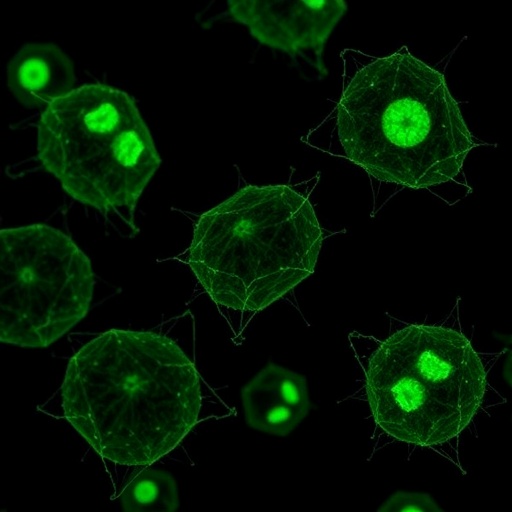Malnutrition remains one of the most devastating health challenges confronting children worldwide, particularly those under the age of five. Globally, nearly 150 million children endure stunted growth primarily attributable to insufficient nutrition, a condition that not only limits their physical development but also impairs cognitive function, immune competence, and long-term health outcomes. While inadequate dietary intake has historically been considered the predominant cause of malnutrition, emerging research spearheaded by teams at Washington University School of Medicine in St. Louis, in partnership with the Salk Institute and the University of California San Diego, has unveiled a deeper layer of complexity underpinning this global crisis. Their groundbreaking study reveals that fluctuations and instability within the gut microbiome—a complex ecosystem of bacteria and microorganisms inhabiting the intestines—may critically influence growth trajectories in malnourished toddlers.
These latest findings, published in the journal Cell on September 9, 2025, centered on a cohort of Malawian toddlers aged 12 to 24 months, a demographic segment emblematic of regions bearing the highest burdens of stunting and acute undernutrition. By employing cutting-edge long-read metagenomic sequencing, researchers were able to assemble a comprehensive pediatric microbial genome library comprising 986 distinct microbial genomes derived from 47 fecal samples collected over nearly a year. This library marks a significant leap forward in the capacity to characterize, monitor, and understand the genetic repertoire and dynamics of the gut microbiota in vulnerable pediatric populations.
Dr. Mark J. Manary, a distinguished pediatrician and malnutrition expert at WashU Medicine, highlights the significance of stable gut microbial communities. In his words, perturbations in the microbiome composition—even subtle shifts—correlate with poorer growth outcomes in children already at risk for stunting. This microbial instability suggests that addressing nutritional deficiencies alone is insufficient to promote optimal development; rather, the integrity and resilience of the gut microbial ecosystem must also be preserved or restored. The study’s evidence indicates that toddlers with a stable microbiome exhibited improved length-for-age scores (LAZ), a standardized metric comparing height relative to age and sex, reinforcing the microbiome’s role as a potential biomarker and therapeutic target in malnutrition.
Malnutrition’s physiological footprint extends beyond mere nutrient scarcity; it engenders profound alterations in the gut environment, diminishing beneficial microbes and facilitating the proliferation of pathogenic species. These microbial imbalances disrupt nutrient absorption, immune responses, and metabolic pathways, further entrenching the detrimental cycle of stunted growth and vulnerability to infections. The research team’s deployment of long-read sequencing technology enabled an unprecedented resolution in identifying microbial species and their functional attributes, capturing genome assemblies that were previously fragmented or undetectable using traditional short-read methods. This high-resolution approach uncovered not only the presence but also the genomic variability within microbial species, shedding light on their potential metabolic capabilities and interactions within the gut ecosystem.
The creation of this pediatric microbial genome library serves as a crucial resource for the scientific community, providing a reference framework to investigate the microbial underpinnings of malnutrition and related intestinal disorders. Notably, the samples stemmed from children enrolled in a clinical trial assessing legume-based complementary foods designed to mitigate environmental enteric dysfunction (EED), a chronic inflammatory condition of the small intestine implicated in poor nutrient uptake and growth failure. The ability to longitudinally track microbial dynamics in such contexts is instrumental in identifying microbiome-mediated mechanisms that could be harnessed to formulate next-generation nutritional therapies.
Beyond the immediate implications for child health, this research exemplifies transformative advances in genomics that extend possibilities to remote and resource-limited settings. The optimized long-read sequencing workflow established by the team is not only scalable but also adaptable to field laboratories operating under challenging conditions. As Dr. Todd Michael of the Salk Institute elucidates, these technological strides open avenues for real-time genomic surveillance of diverse biological phenomena, including infectious disease outbreaks, antimicrobial resistance, agricultural productivity, and environmental biodiversity, democratizing access to high-throughput genomic insights.
Intriguingly, the study underscores the necessity of viewing malnutrition through a holistic lens that integrates microbial ecology with host physiology. The researchers emphasize that simply providing therapeutic foods, such as the peanut butter-based paste that has saved countless lives globally, may not fully restore growth without concurrently addressing the microbiome’s health. These findings advocate for a new paradigm in nutritional interventions—one that incorporates microbial diagnostics and targeted microbiota modulation alongside conventional dietary supplementation.
The path forward illuminated by this work is rich with translational potential. Researchers aim to leverage the genome library to predict malnutrition risk, design microbiota-informed dietary regimens, and develop microbial therapeutics such as probiotics or microbiome transplants tailored to the needs of children in high-risk regions. Such innovations could revolutionize the fight against global child malnutrition, transforming it from a problem defined by food scarcity alone to one addressed through precision medicine approaches cognizant of microbial contributors.
Moreover, the methodological breakthrough of combining meta-pangenomics with long-read sequencing redefines microbial ecology investigations by offering culture-independent, exhaustive genomic characterization. This comprehensive approach enables the differentiation of microbial strains, the detection of mobile genetic elements, and the exploration of functional gene repertoires that influence host-microbe interactions. These insights enhance our grasp of microbiome resilience, dysbiosis, and recovery potential under nutritional stress, illuminating new biomarkers and therapeutic targets.
The work is bolstered by a collaborative network of researchers with expertise spanning pediatrics, microbiology, genomics, and bioinformatics, underscoring the interdisciplinary nature of tackling malnutrition. Notably, their transparent disclosure of conflicts of interest ensures scientific integrity and fosters trust in the findings disseminated to both academic circles and the broader public health community.
Ultimately, this study signifies a pivotal moment in nutritional science, reinforcing the notion that the gut microbiome is not merely a passenger in malnutrition but an active participant shaping health outcomes. By harnessing the power of advanced genomic technologies and comprehensive microbial databases, the scientific community moves closer to elucidating the intricate biological landscapes that govern child growth and crafting innovative, effective interventions to eradicate pediatric malnutrition globally.
Subject of Research: People
Article Title: Culture-independent meta-pangenomics enabled by long-read metagenomics reveals associations with pediatric undernutrition.
News Publication Date: 9-Sep-2025
Keywords: Human gut microbiota, Malnutrition
Tags: cognitive function and malnutritioncollaborative research in child healthgut microbiome and nutritionhealth challenges in children under fiveimmune competence in undernourished childrenimplications of gut bacteria on growthinternational malnutrition statisticslong-read metagenomic sequencing in microbiome studiesmalnutrition and stunted growth in childrenmicrobial ecosystems in pediatric healthmicrobiome instability and child growthpediatric malnutrition research





